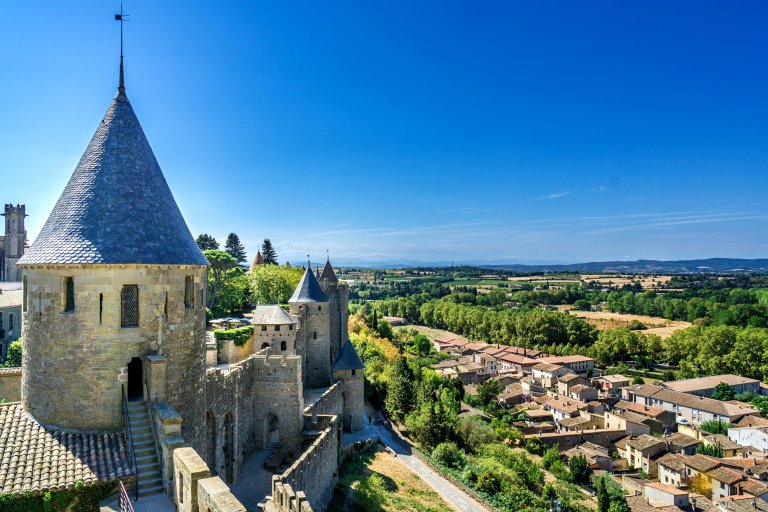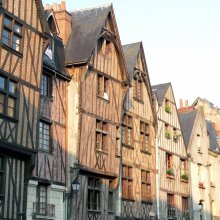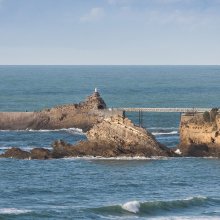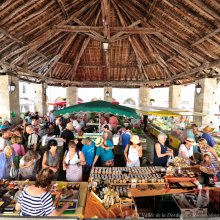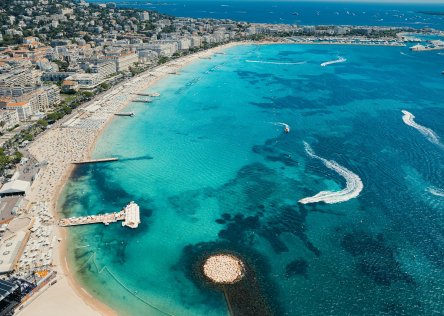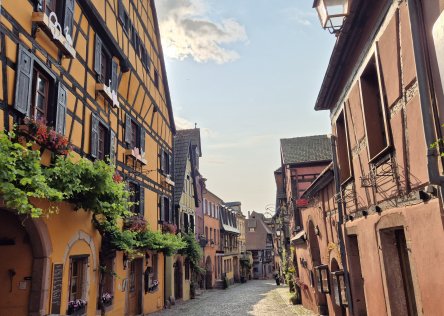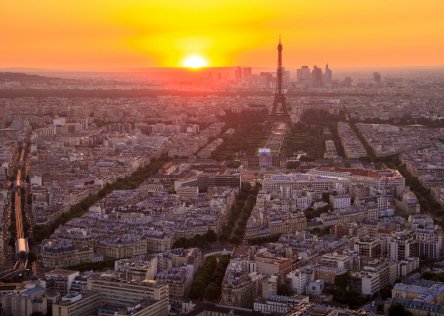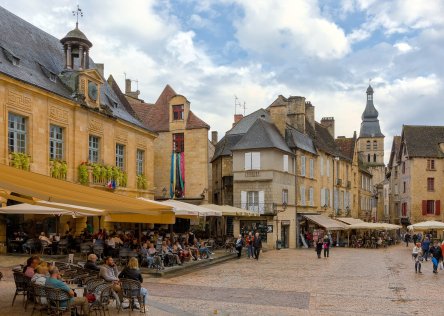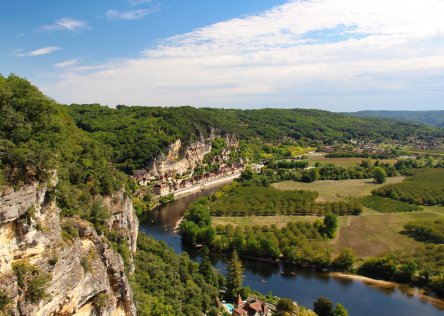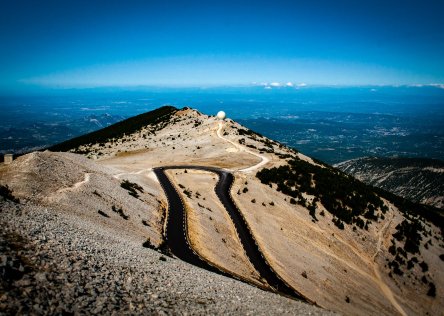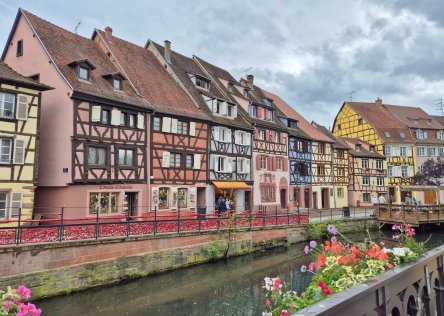Part of the bigger Languedoc-Roussillon region, the Roussillon area spans from the Spanish border to the city of Narbonne and includes the eastern fringe of the Pyrenees mountains. This area is also known as the French Catalonia, and the history and traditions of the Catalans are still very present today.
The height of Catalan power was reached in the 13th and 14th centuries when the Franco-Catalan frontier was fixed along the base of the Corbières hills north of Perpignan. But Jaime I made the mistake of dividing his kingdom between his two sons at his death. Thus, the French part of Catalonia became part of the kingdom of Majorca, with Perpignan as its capital. Coveted by the rival brother, the king of Aragon, Majorca sought alliance with the kings of France, who saw this as a splendid opportunity to straighten out their southern border, thus ensuring continuous squabbling that only finally came to an end with the Treaty of the Pyrenees, negotiated by Louis XIV in 1659.
Food and Drink in Languedoc-Roussillon
The area is very agricultural, and is particularly known for its orchards, which produce apricots, peaches, and melons. Vineyards are also very prevalent, and one third of France’s wine is produced here.
The food of this region mixes the abundance from the land and sea with historical influences, especially Catalan, resulting in a diversity of culinary specialties to discover. From Cassoulet in Carcasonne to Crème Catalane (crème brulée flavored with orange blossom) closer to the coast, there are also more “original” dishes to try, such aa:
- La Bullinada: Eel stew made with potatoes, garlic, prawns, and mussels. Sometimes the eels are replaced by different fish.
- La Cargolade: snails grilled over vine shoots.
- Les Boles de picolat: meatballs and white beans simmered in tomato sauce.
- Bunyetes: sugared galettes fried in oil and sugared.
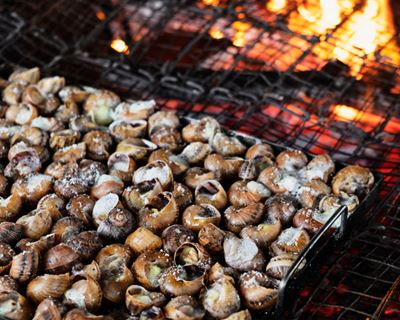
Photo: la Cargolade, ADT Pyrénées-Orientales
Catalan Culture
The Catalan language is very much present in the region, and it is recognized as an official regional language. Because of this, the language is supported via cultural outlets and the media. It can be taught in public schools, with some bilingual classes being offered up to university. You will also see it on street signs and communications produced by the local administrations. An effective program, because it is estimated that 33% of the population can speak Catalan and 49% can understand it.
The Catalan culture is also kept alive with the traditional dress, especially worn during local forkloric celebrations. For the men, the outfit includes the barretina (a long woolen cap usually red or purple) and the faixa (a wide belt). The women will wear a ret (a fine net bag to contain hair). The traditional footwear is the espardenya or espadrille.
Along the coast: the Côte Vermeille, Perpignan, and Narbonne
The Côte Vermeille
Heading north from the Spanish coast along the Côte Vermeille is where the charming towns of Collioure, Port-Vendres and Banyuls are located. The area is very busy in July and August, with many French people and other Europeans on vacation.
Banyuls is the birthplace of the sculptor Aristide Maillol as well as the dark, full-bodied Banyuls wine. Both can be enjoyed here: Maillol’s works can be seen in front of the townhall and in the port, as well as at the Mas Maillol museum just outside of town and you can sample some wine at Terres des Templiers cellar, on route du Mas-Reig, just under the rail line at the foot of the steep brown-stone terraces of Banyuls’ own vineyards.
A magnificent winding drive snakes up from Banyuls through the vineyards to the Tour Madeloc, a watchtower built by Jaime I of Majorca at the end of the 13th century on the crest of a ridge at about 650m. On a clear day, you can see down into Spain, along the coast, across to Montpellier and over the Corbières, with the castles of Quéribus and Peyrepertuse easily visible.
In the early 1900s, Collioure inspired the Fauvists Matisse and Derain, and you can stroll the Chemin du Fauvisme in town which retraces their works. There are three beaches in Collioure that tend to get crowded, but the view of the sea and mountains provides an exceptional backdrop.
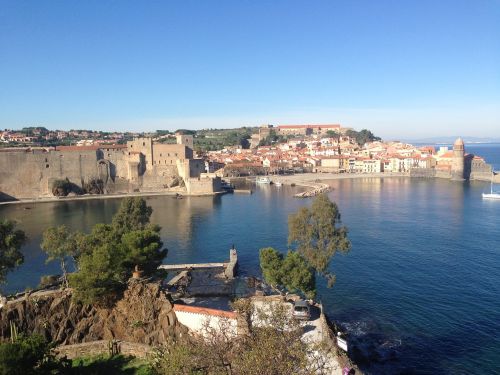
Photo: the village of Collioure, Needpix
Nearby Port-Vendres remains a busy fishing port, with the daily catch unloaded and auctioned off every day except Sunday between 4:30-6pm at the far end of the harbor.
Perpignan
During the Middle ages, Perpignan was prospered under the kings of Majorca and the kings of Aragon. The Catalan flavor is still present today in the architecture, palm tree lined squares, and the food. The town’s highlights are easily visited in a day and can be done on foot. You may pick up or download the map and brochure at the Tourism Office. The major sites are:
- The Palais des Rois de Majorque: Constructed in 1276 by King Jaime of Majorca, the Palace of the Kings takes up a large area in the southern part of the city. The red brick walls were added for refortification purposes by Vauban. Today, the palace hosts a permanent exhibit about the life of King Jaime, as well as art and photography exhibitions. The views over the city are nice from the ramparts.
- Place Joseph Cassanyes: There is a busy daily market in the square, and the surrounding neighborhood has been populated by diverse populations, including North African immigrants and Romany gypsies. On these narrow streets, and along rue François Llucia, you will find North African cafés, bakeries and restaurants, and stalls selling everything from kebabs to spices to jewelry.
- Hôtel Pams: Pierre Bardou, son of the creator of JOB cigarette papers, built the buildings between 1852 and 1872. It was then transformed into an elegant art nouveau mansion by his son-in-law Jules Pams during the 1890s.
- Place de la Loge: In the heart of the old town on the Place de la Loge sits three historic buildings - the Loge de Mer (the former stock exchange and maritime tribunal, now the Tourist Office), the Palais de la Députation (once house the Roussillon parliament), and the Hôtel de Ville.
- Le Castillet: This gate to the city was built in 1368 and to repel invaders. In the 17th & 18th centuries, it was a prison. A steep and narrow climb up the 142 steps will reward you with a nice view of the city and surrounding area. The building also houses the Catalan Museum of Popular Arts, which has a replica of a 17th century kitchen.
- La Gare (the train station): Salvador Dali’s vision while at this train station in 1963, lead him to claim it as “the center of the world”. The ceiling is painting in colorful, swirling shapes in homage to the artist’s surrealist style. The statue of Dali which used to be located on the roof of the station, is now in Place de Catalogne.
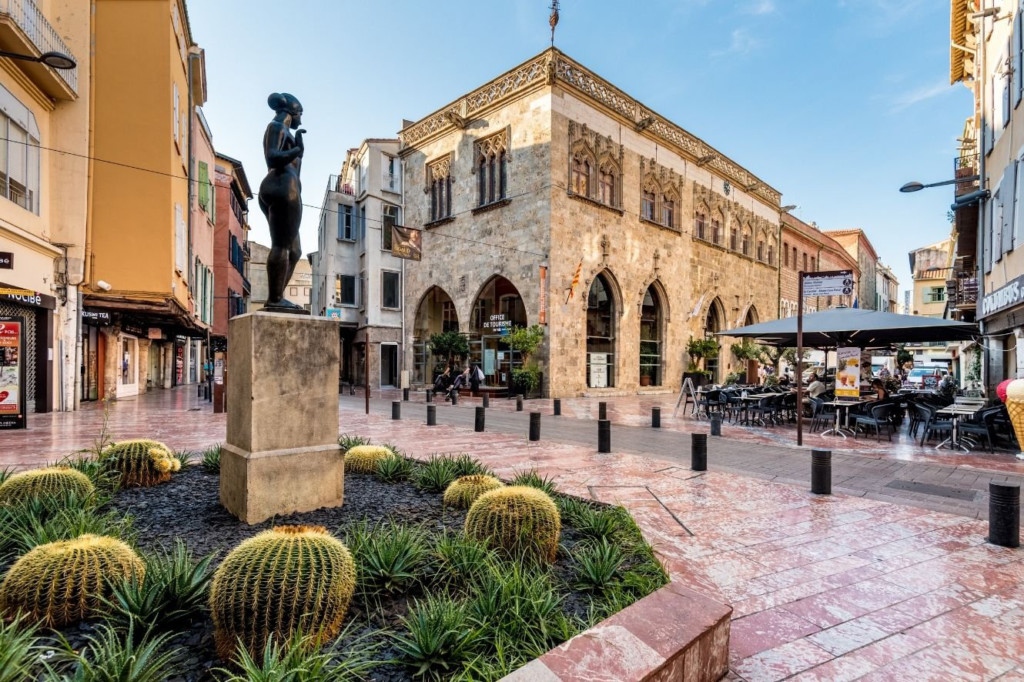
Photo: Loge de la Mer, OT Perpignan
Narbonne
Narbo Martius, founded in 118 BC as a major stop on the road linking Rome to the Iberic peninsula (the Via Domitia), is none other than the very first Roman colony to be established outside Italy. Antiquity, the Middle Ages, the Renaissance, the Golden age of wine making in the end of the 19th century . . . the rich and varied past of Narbonne has left a magnificent heritage.
The gate to the city was built in 1368 and was designed to repel invaders. In the 17th & 18th centuries, it was a prison. A steep and narrow climb up the 142 steps will reward you with a nice view of the city and surrounding area. The building also houses the Catalan Museum of Popular Arts, which has a replica of a 17th century kitchen.
See the layers of the Roman city, with part of the original Via Domitia uncovered in the center of the Place de l’Hôtel de Ville, or go under the city to visit the old Roman tunnels and caves at the Horreum.
The Canal de la Robine, a UNESCO site, runs through the city before eventually joining the Canal du Midi and provides a nice stroll, bike ride or the opportunity to rent a small electric boat for a cruise. A great place to have lunch as well as take in the pretty building is at the lively Halles covered market.
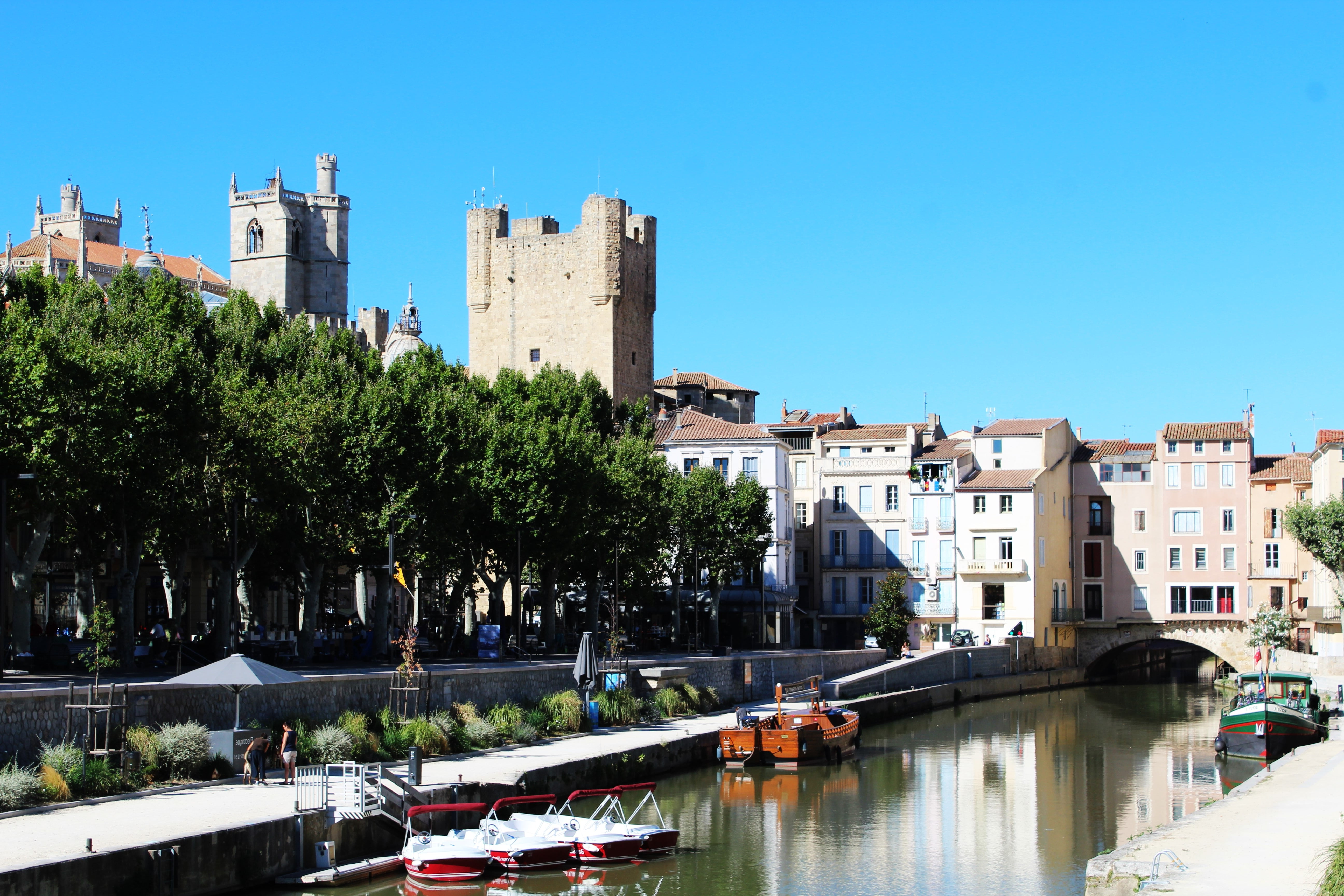
Narbonne and the Canal de la Robine, Pikist
Inland: Carcassonne and the Cathar country
The word Kathari, from which Cathar is probably derived, is the Greek word for “pure.” The Cathar religion has its roots in eastern religions from 2500 years ago, based on the idea of two opposing forces, good and evil. Many subsequent religions take this starting point, and the Cathar religion that arrive in Europe via the Balkans in the 11th century is one of these.
The major difference between the Cathar religion and its base in a duality, and a religion like Christianity, is the weighted importance between good and evil. Cathars and other dualists believe that these are of equal importance, whereas Christians believe that the forces of good are superior.
There is some common ground between the Cathar religion and Crhistianity. However, for the Cathars, the material world was considered entirely evil, thus the private ownership of property was outlawed, as was marriage. Moreover, they abstained from all sexual pleasures, and were strict vegetarians.
The Cathars were a sect strong in this part of France, although the adherents probably never accounted for more than ten percent of the population. They were, however, members of the nobility and the influential classes, which alarmed the powers that be. The Cathars were thus proscribed as heretics by Pope Innocent III, and with papal blessing and the connivance of the French kings, hungry northern nobles descended on the area in a series of Albigensian crusades, beginning in 1208 and led for many years by the notoriously cruel Simon de Montfort.
Cathars who were caught were burnt in communal conflagrations, 100 or 200 at a time. Their lands were laid to waste or seized by the northern nobles, de Montfort himself grabbing the properties of the count of Toulouse.
The effect of this brutality was to unite both the Cathars and their Catholic neighbors in southern solidarity against the barbarous north. Though military defeat became irreversible with the capitulation of Toulouse in 1229 and the fall of the castle of Montségur in 1244, it took the informers and torturers of the Holy Inquisition another seventy years to root out Cathars completely.
The Cathar Country
A very tough life for the Cathars! But today, following in the Cathar’s footsteps by visiting the ruined yet romantic fortresses, is a great experience. They were conceived not to be easily taken by their enemies, thus access to them can be sometimes difficult, so plan on hiking shoes and water for these visits.
- Peyrepertuse castle
If you only have time to visit one of the Cathar castles, this is the one. Unbeatable site, stunning views, and unusually well preserved, Peyrepertuse is one of the most awe-inspiring castles anywhere in Europe, clinging to the crest of a long, wickedly jagged spine of rock on the top of a mountain ridge, surrounded by sheer drops of hundreds of meters.
You enter on the north side through thickets of boxwood. The main gate is controlled by a keep and a barbican. You will find the heaviest fortifications at the lower eastern end of the ridge. The castle is much larger than the others despite its precarious hold on the earth, with extensive buildings inside the outer wall, culminating in a keep and tower shutting off the highest point of the ridge, where such a pit of air opens at your feet that no artificial defense is necessary.
Surprisingly, the castle was taken by the French without much difficulty in 1240, and most of the existing fortifications were built after that.
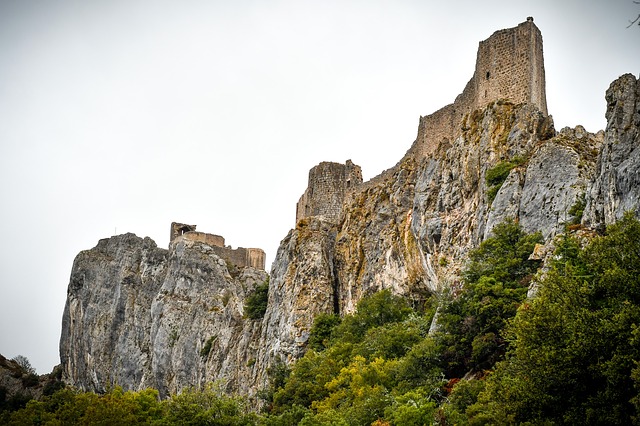
Peyrepertuse castle, Pixabay
- Quéribus castle
The Château de Quéribus, the last bastion of Cathar resistance, stands on the ridge above the vine-ringed village of Cucugnan which marked the French-Spanish border until the 17th century. It is spectacularly situated, balanced on a pillar of rock above a sheer cliff, whose crevices nourish a variety of beautiful wildflowers.
Because of the extreme, cramped topography of the rock, the space within the walls is stepped in terraces, dominated by the polygonal keep and accessible by a single stairway. Inside, at the heart of the keep, is the remarkable chapel of St-Louis-de-Quéribus, surprisingly high and wide when you consider the keep’s tortured position, and supported by a single pillar. The stairs to the roof are broken, but from the window halfway up there are fantastic views to Canigou and Perpignan, with other castles and watchtowers of the Spanish Marches dotting the peaks and ridges. To the northwest, you are within easy eyeshot of Peyrepertuse.
The history of Quéribus is like that of Puilaurens, though the fortifications visible today are from the thirteenth century. It was the last stronghold of Cathar resistance, holding out until 1255, eleven years after the fall of Montségur. Never reduced by siege, its role as a sanctuary for the Cathars ended with the capture of the luckless Chabert.
Three other castles make up what are known as the Five Sons of Carcassonne: Aguilar, Puilaurens and Termes. All three can be visited, but they are unfortunately very much in the ruin stage today.
- The Four Lastours castles
Isolated by the deep valleys of the Orbeil and Grésilhou rivers and located on a rocky ridge above the village of Lastours, the Four Castles are a remarkable sight. In a line are Cabaret, Surdespine and la Tour Régine. Quertinheux is built on a separate pinnacle close by. It is a 2 hour walk to see all 4 castles.
Cabaret castle is the main citadel with a barbican defense system. It consists of a north tower, a polygonal keep in the south and a group of residential buildings in the center, all surrounded by ramparts with a round walk. The crenellated wall is built with irregular material, with large stones forming the corners and openings.
The Tour Régine, closest to Cabaret, is the most recent, and smallest fortress. It consists of a round tower, surrounded by a small curtain wall which has collapsed. Below ground, the tower contains the largest cistern of the four castles. The tower has three stories and is flanked by a spiral staircase. The white limestone used is identical to that at Cabaret. It is thought that this tower was built after the Albigensian Crusade: the name (Régine = Royal) suggests as much and there is no written evidence of its existence prior to 1260.
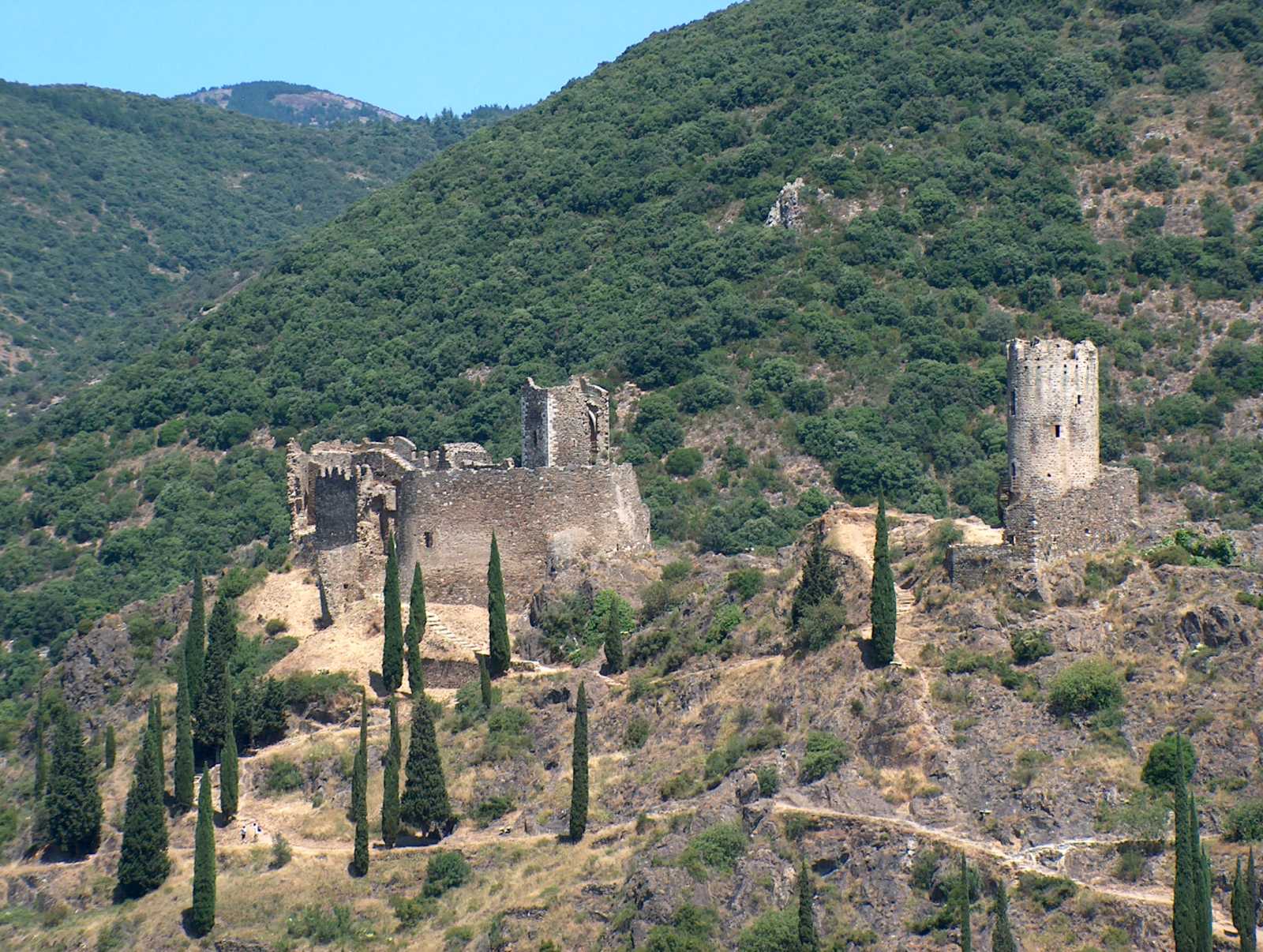
Tour Régine and Cabaret, All-free-photos
Surdespine, also called Fleur-Espine (Thornflower) is the least preserved of the four. On the highest part of the site, it consists of a square tower, a house, and a cistern. A rectangular curtain wall gives protection. It is known for its lack of murder holes and its four semicircular arched windows.
Further south along the ridge is Quertinheux castle. A chicane defends the entrance, and there is a polygonal curtain wall and a circular tower. It overlooks the remains of a destroyed Romanesque church.
Nearby, you can go underground with a visit to the Cabrespine Chasm. With its impressive dimensions (80m wide and 250m deep), this underground environment provides eccentricities of nature: underground river, draperies, columns, waterfalls …. The variety of crystals is exceptional: there are crystals of calcite and aragonite, richly colored by metallic oxides.
Carcassonne
Medieval Carcassonne is perhaps the most impressive fortified medieval town to be found. Which is ironic, because in the middle of the 19th century it was in such bad repair that it became scheduled for demolition, only to be saved by the efforts of the local mayor.
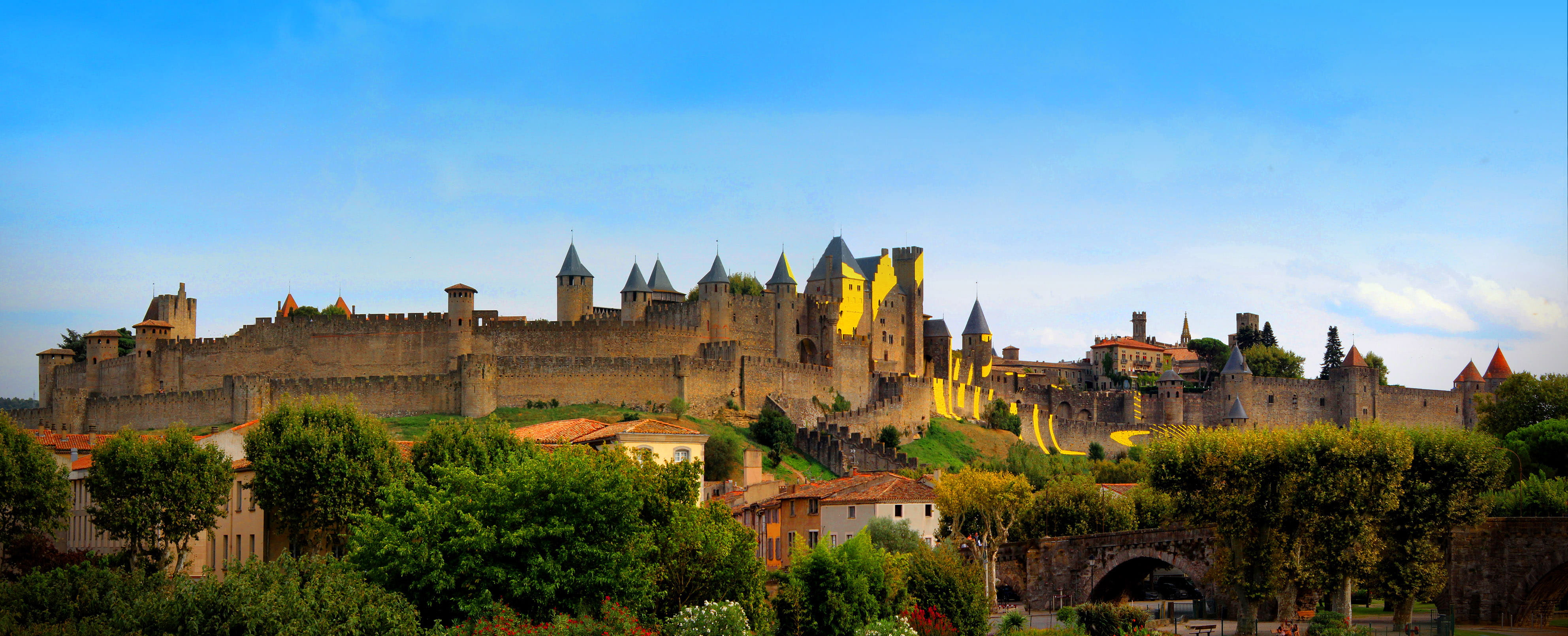
The Cité of Carcassonne, Pikrepo
Due to its position on historical routes across France, the location has been occupied for more than 5,000 years, and was an important center from 2,500 years ago onwards. It was first fortified by the Romans and given the name Carcaso. After the Romans were driven out, Carcassonne fell in the hands of various of the invading tribes.
Later, as we enter the 13th century, the Albigensian Crusade under Simon de Montfort attacked and seized this Cathar stronghold, and again more fortifications were added, sufficient to keep Prince Edward the Black out of Carcassonne during the Hundred Years War.
Subsequently the location and town gained strategic importance from being on the frontier between France and Spain. This became less important after 1659 when the Treaty of the Pyrenees passed the town and region definitively to France - hence from the 17th century onwards the need for a defended city passed and Carcassonne became an important regional town.
It reached its low point at the middle of the 19th century when a century of abandon had made it perilously dangerous. The buildings within the city were uninhabited and in very poor condition.
The cité of Carcassonne has an external lower defensive wall surrounded by a higher wall with many towers, which itself encloses the ancient town. Within this medeival labyrinth are streets with medieval dwellings, a cathedral and a chateau. There is also a museum that explains the impact and story of the Albigensian crusade.
Today, you may walk the ramparts and try to count the 52 towers. Or visit the 22 wells withing the medieval town. The drawbridge can still be seen at the Porte Narbonnaise, the main entrance. In between the walls, the Lices run for over 1km. This was where the cité’s poorest residents would have built a shanty town, but they were cleared out during Viollet-le-Duc’s restorations.
After your visit, leave the cité from the Porte d’Aude and walk down to the Pont Vieux, which joins the Cité to La Bastide. From here, you have a nice view up to the Cité.
Often overlooked, a stroll though La Bastide neighborhood is worth it. This “new” part of Carcassonne was built by Saint Louis in 1260 and is organized around the place Carnot. In the 18th & 19th centuries, hotel particuliers were built, thanks to the growing wine and cloth trade.
Here are some more suggestions of things to do in Carcassonne.
- Laura Crotet, France Just For You
If this article has peeked your interest in Southwestern France, contact us to help plan your trip.
RELATED: Enjoy the mountain ranges of France
